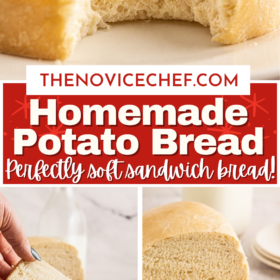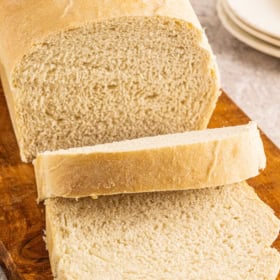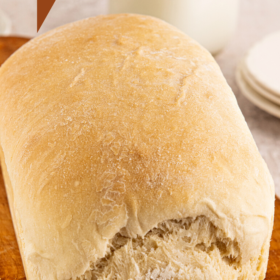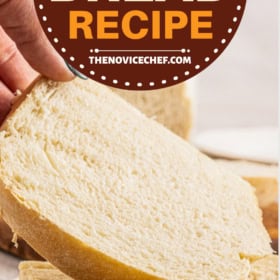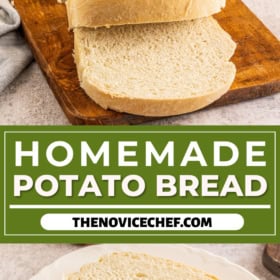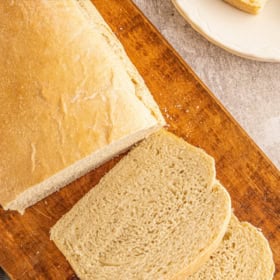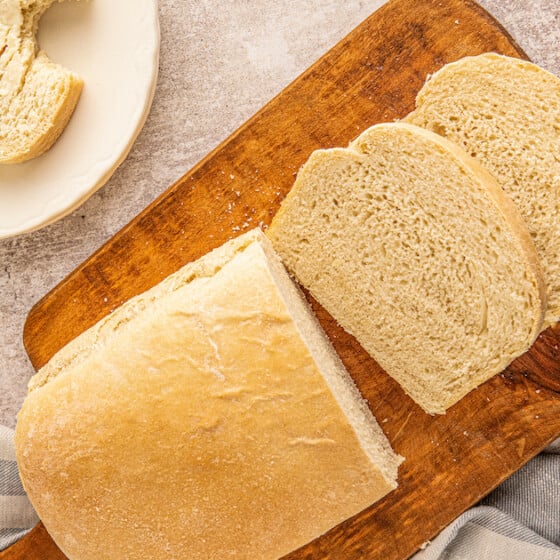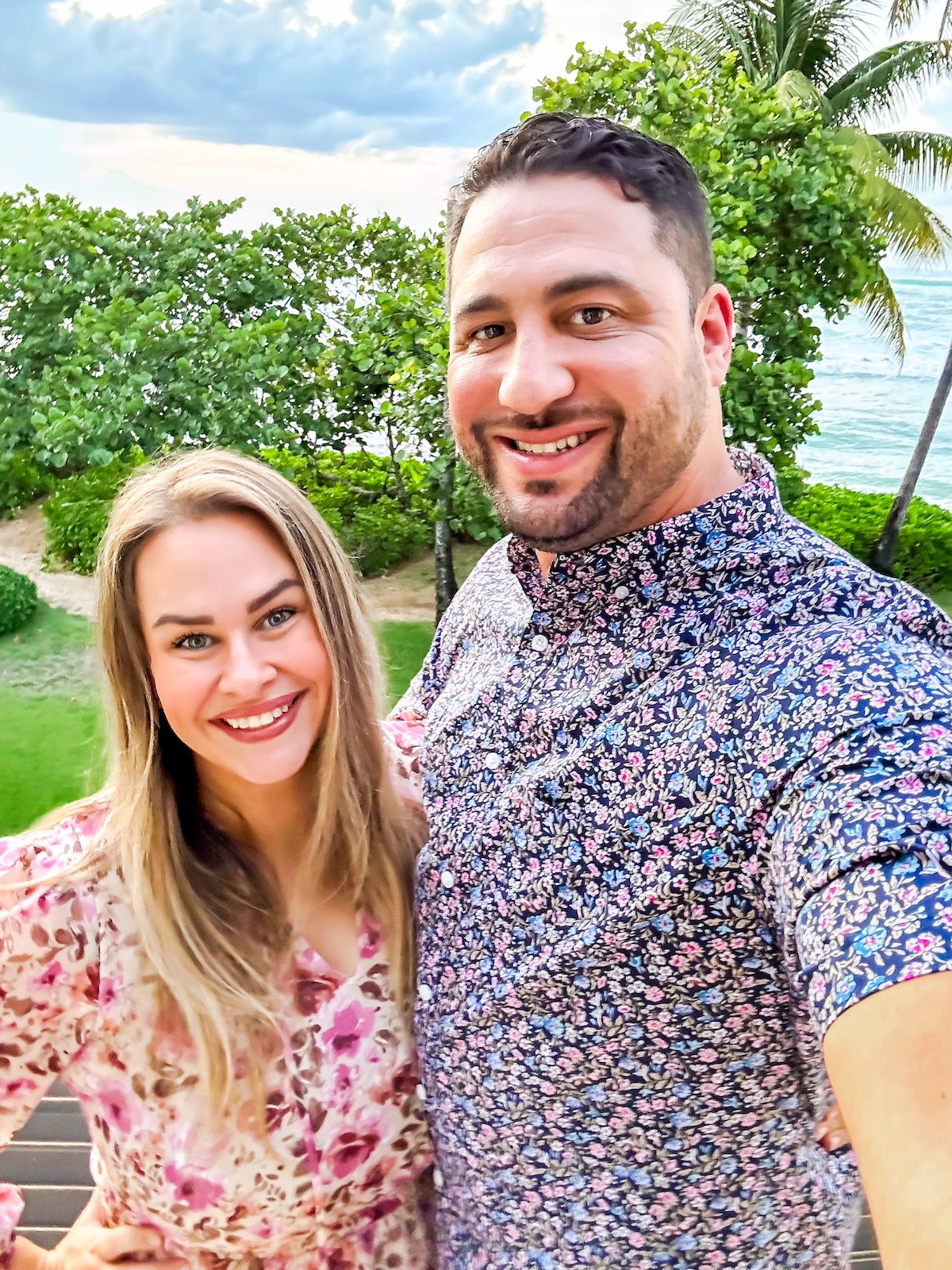Soft, fluffy bouncy Potato Bread is the sandwich bread of your dreams. Potatoes and butter add moisture and softness to this special bread. Serve with butter, use it for sandwiches, or make it part of a family-style dinner.
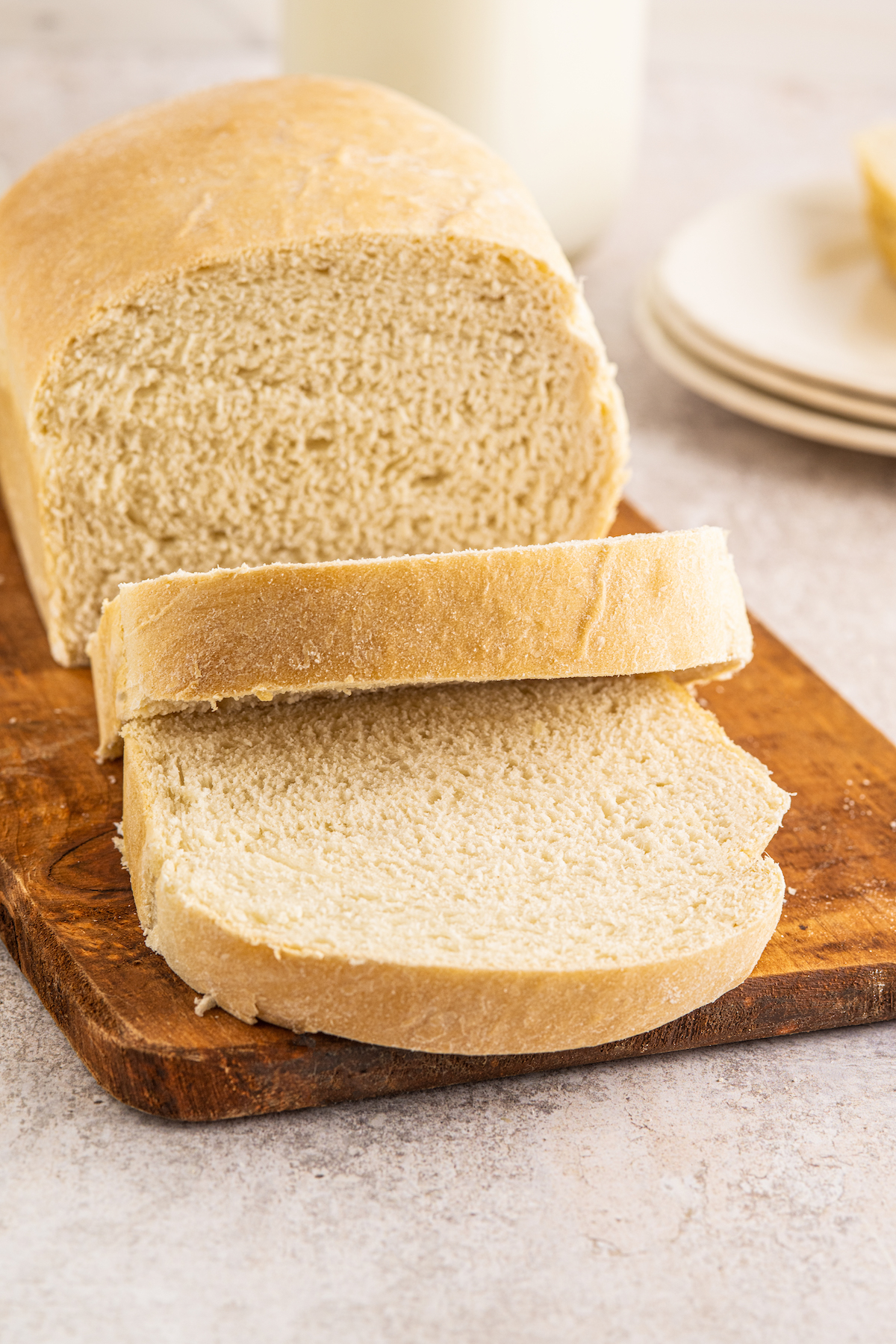
A Soft, Fluffy Potato Bread Recipe You’ll Love!
Have you ever tried potato bread? I have a weakness for soft, fluffy bread like this. Baking up quick breads, Homemade Bread for sandwiches, Buttermilk Biscuits, and Soft Dinner Rolls can be super fun. But this tender, flavorful potato bread recipe is one of my favorites – it’s just so good.
Potato bread is great for sandwiches especially. Throw some ham and swiss or turkey and cheddar on this, and you’ll be in love! The moist, light texture also makes it great for toasting, or for serving with sweet condiments like Homemade Nutella, Lemon Curd, or jam (this Chia Cherry Jam is a super yummy option). However you serve it, it’s sure to be devoured – every last crumb!
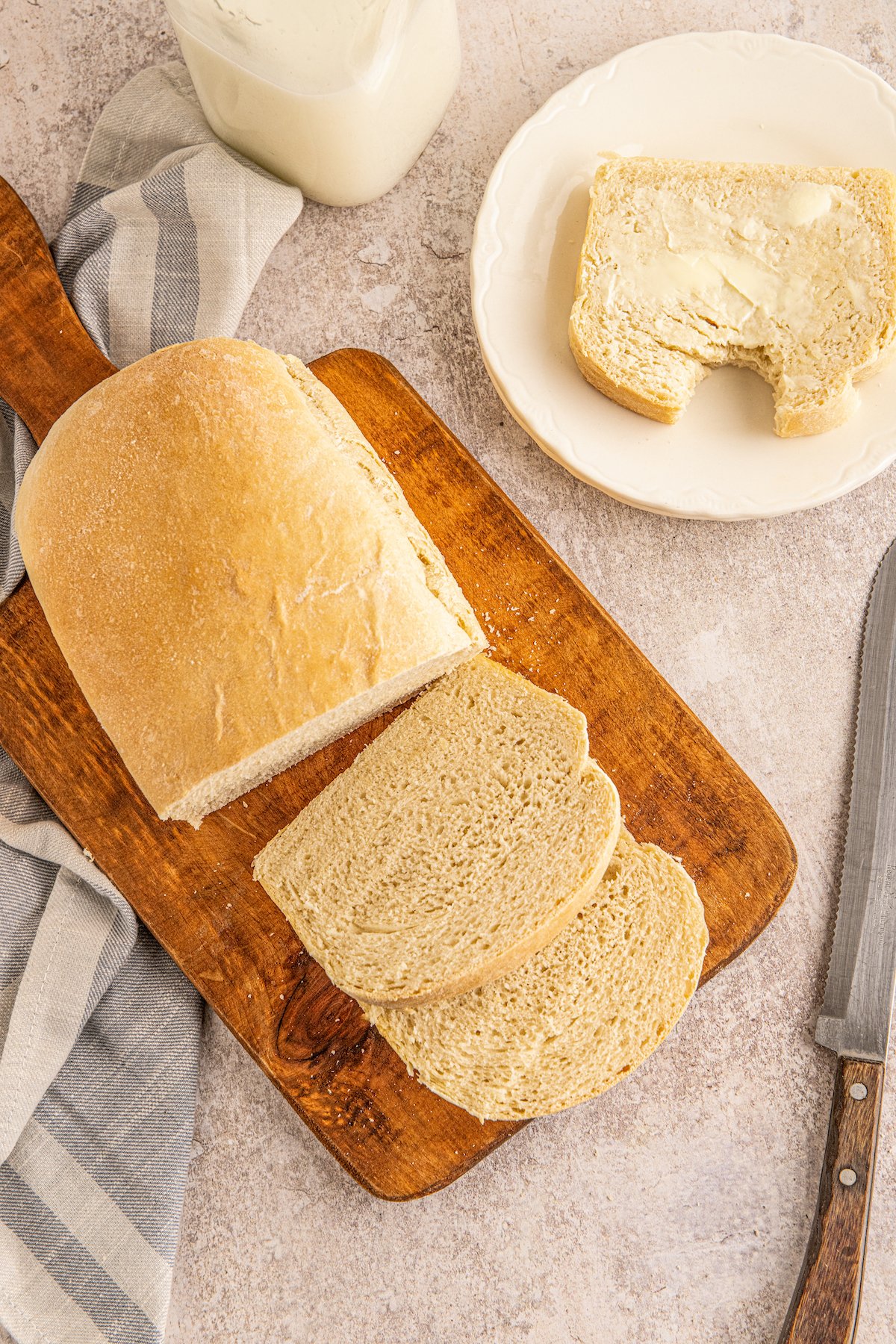
What Makes Potato Bread Different?
Potato bread is special because it really does include potatoes! That might sound a bit odd or even unappealing, but trust me, it’s amazing.
Adding mashed potato to the bread dough creates chemical reactions that result in super soft, cloud-like sandwich bread. The added potato also helps the yeast rise, and creates a more flavorful loaf, as well.
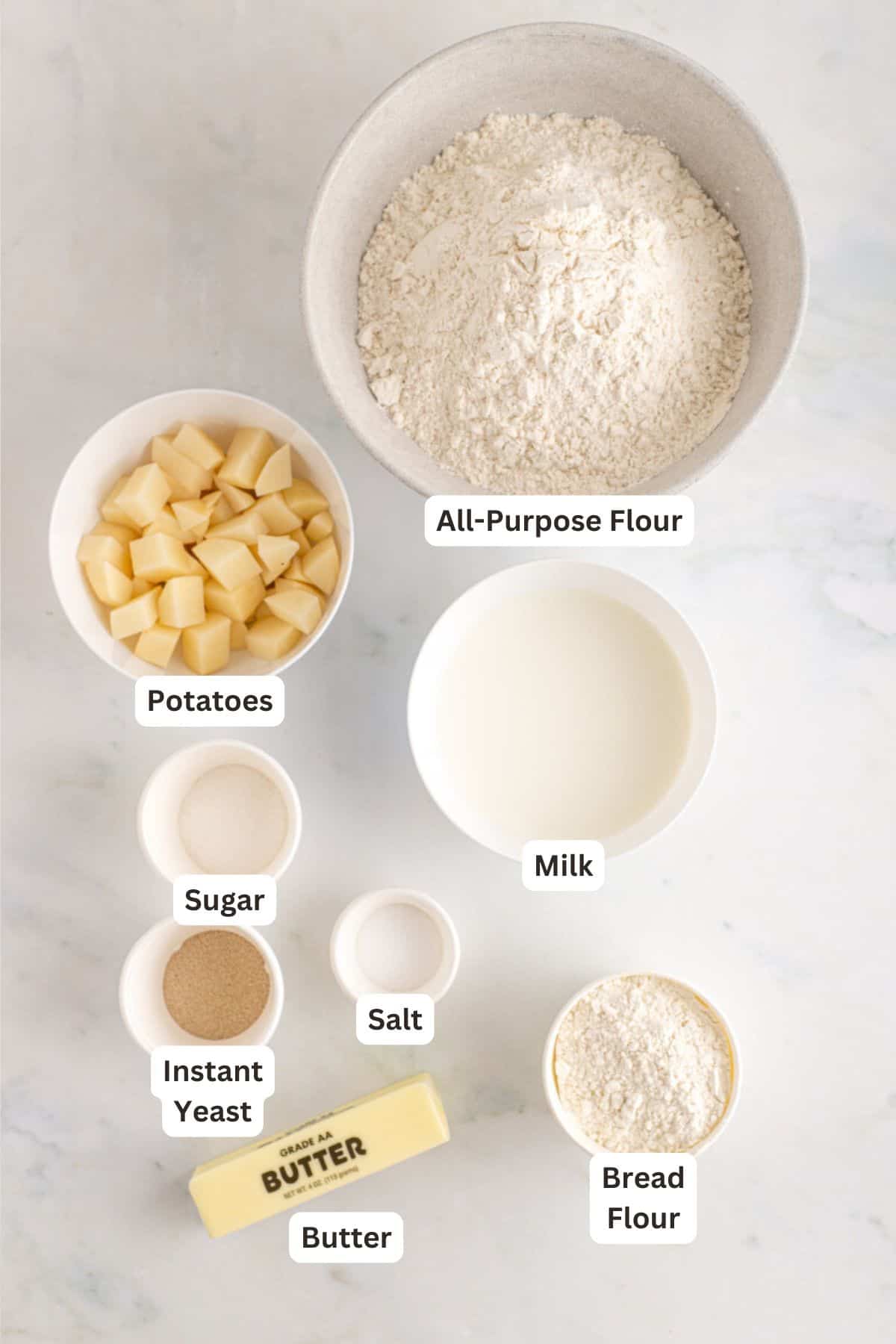
Ingredients
Like many bread recipes, this is a short and sweet list of ingredients. Each item is a wholesome, ordinary, pronounceable ingredient. Pretty great, right?
- Potatoes: Dice up enough potatoes to make a cup and a half.
- Milk: Warm the milk to just above body temperature. You could also use water if you like.
- Sugar: I use ordinary granulated sugar here – raw sugar, brown sugar, or honey would also be good. Don’t leave this out. Sugar feeds the yeast and gives the loaf its slight touch of sweetness.
- Yeast: Instant yeast is my go-to for this recipe. Instant yeast can go by a few different names depending on the brand, like fast rising yeast or rapid rise yeast.
- Flour: A mix of all-purpose flour with a bit of bread flour works really well for potato bread. You don’t want to use all bread flour, with the higher protein count, it will make your bread less soft.
- Salt
- Salted Butter: At room temperature. You can use unsalted butter instead, but if you do, add an additional ¼ teaspoon of salt to the recipe.
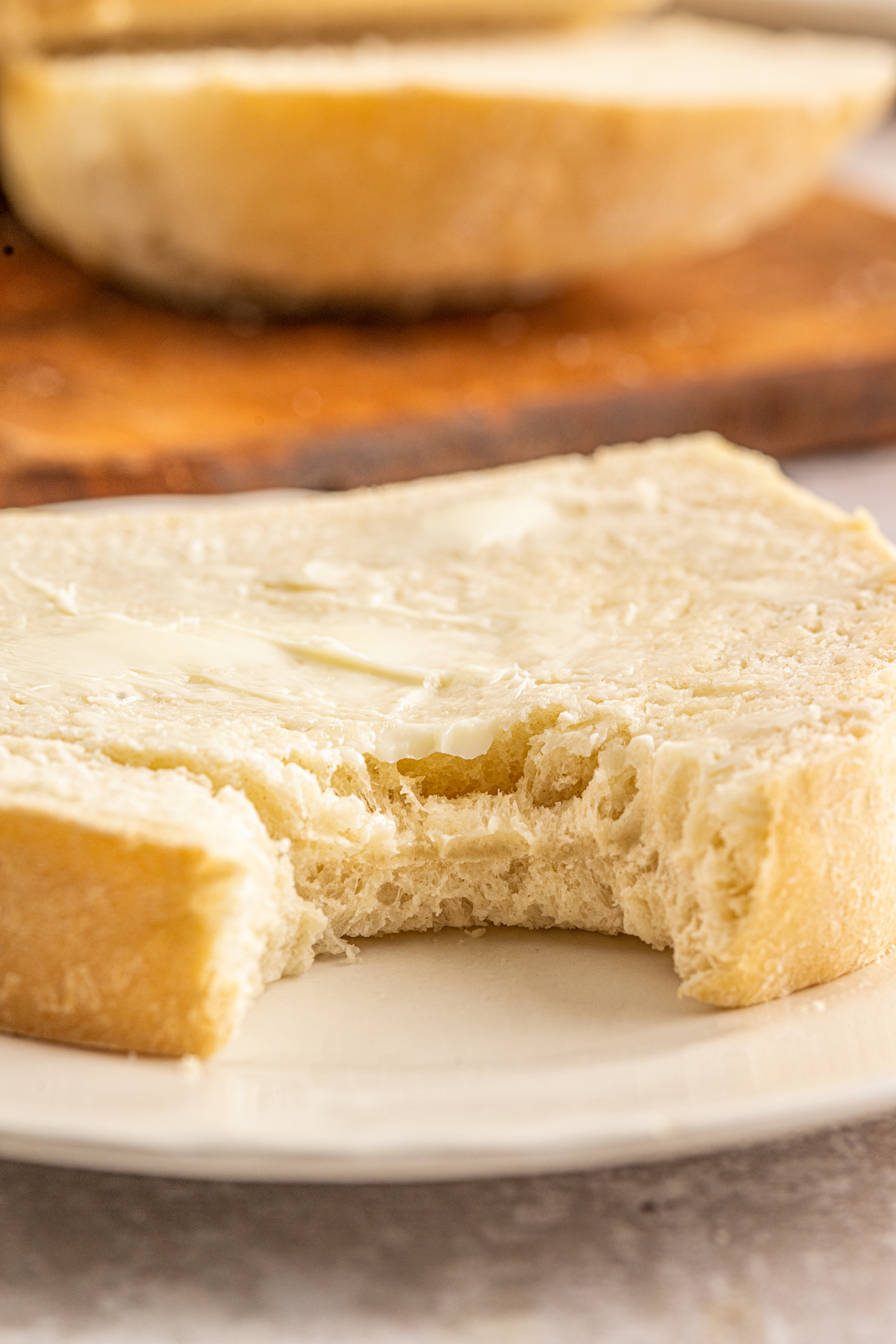
How to Make Homemade Potato Bread
This potato bread basically works like a normal yeast bread recipe, with the addition of making some mashed potatoes. If you already have some cooked potatoes on hand, feel free to mash those up and use them instead!
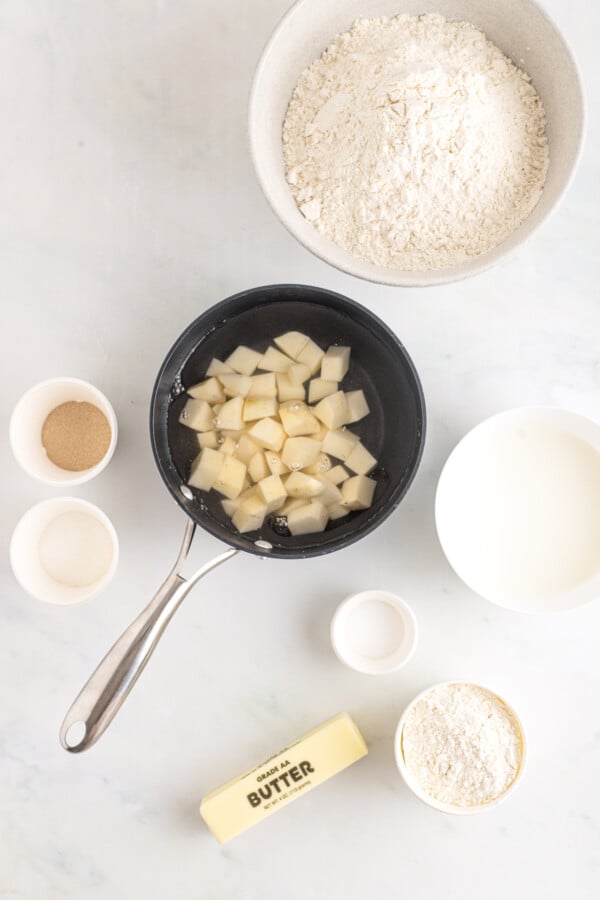
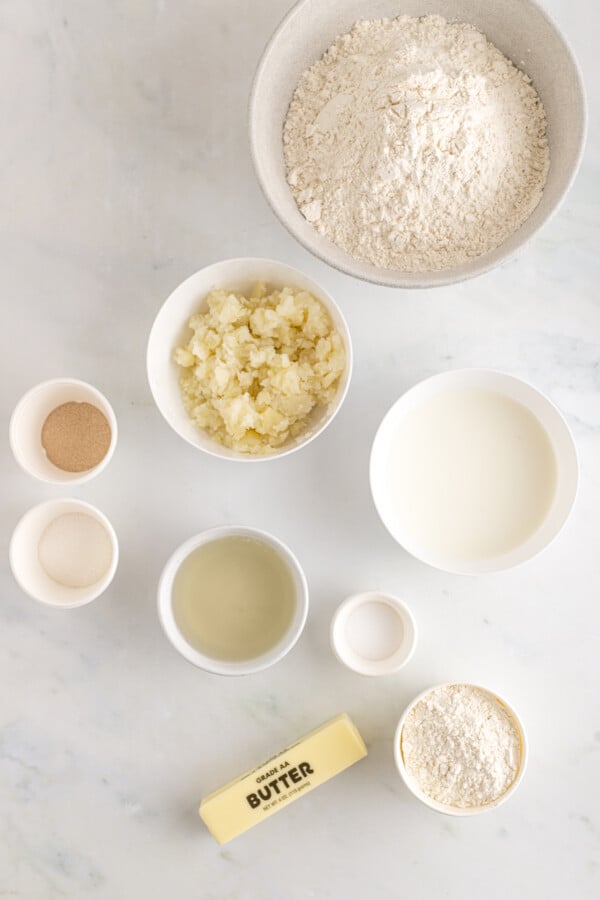
- Boil the Potatoes. To get started, place your diced potatoes in a medium-sized saucepan. Add enough water to cover the potatoes, and then bring to a boil. Boil the potatoes until they’re cooked through (this usually takes 10 – 20 minutes, depending on the size of your potato pieces and how old the potatoes are).
- Mash the Potatoes and Reserve Some of the Water. Once the potatoes are tender, use a ladle or a large spoon to set aside 1 cup of the cooking water for your dough. Drain the rest of the water, and mash the potatoes. Let them cool for 20 – 30 minutes.
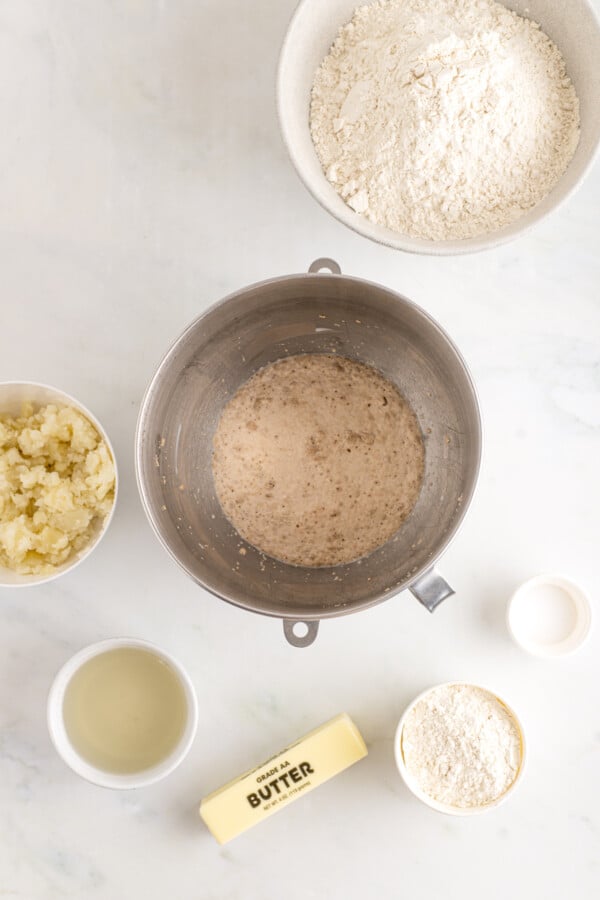
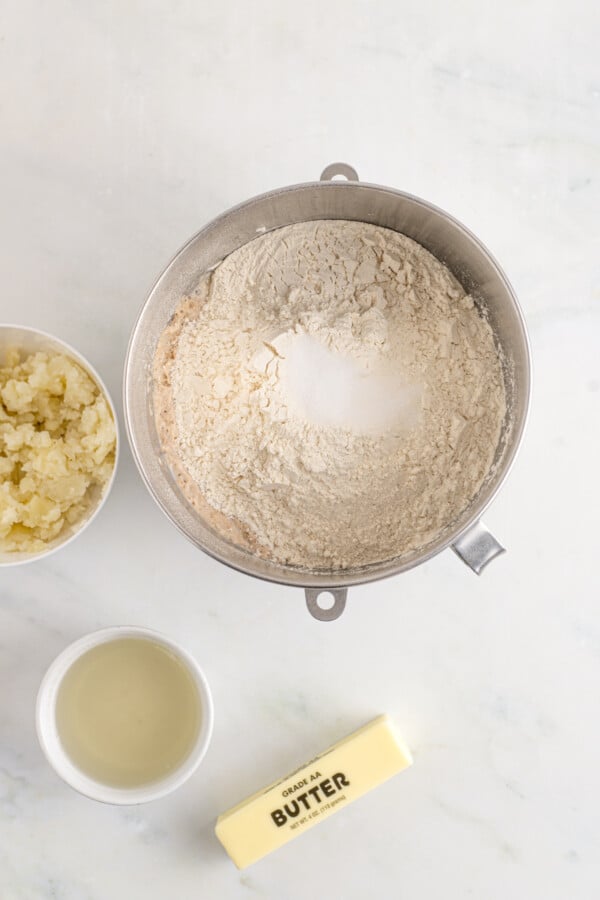
- Prove the Yeast. In the bowl of a stand mixer, fitted with a whisk attachment, combine your warm milk, sugar, and yeast. Lightly whisk these ingredients together, and then let them sit for 5 minutes. The mixture should become bubbly. If it doesn’t, you’ll need to start again with fresh ingredients. Make sure not to get the milk too hot or too cold, or it will kill the yeast.
- Add the Dry Ingredients. Swap the whisk attachment to a dough hook, and then add the all-purpose flour, bread flour, and salt. Knead the dry ingredients in on medium-low speed, until they’re fully incorporated. The mixture will be clumpy and dry.
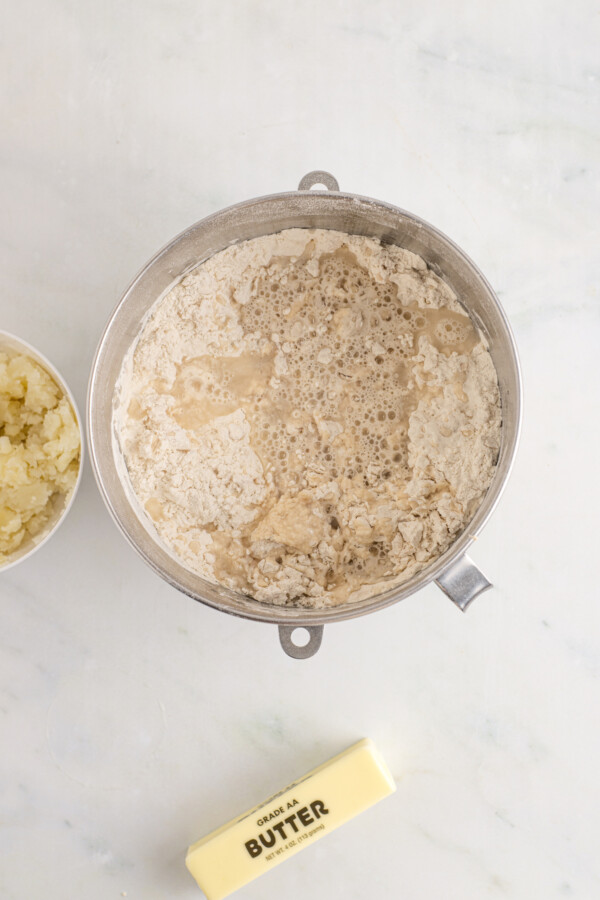
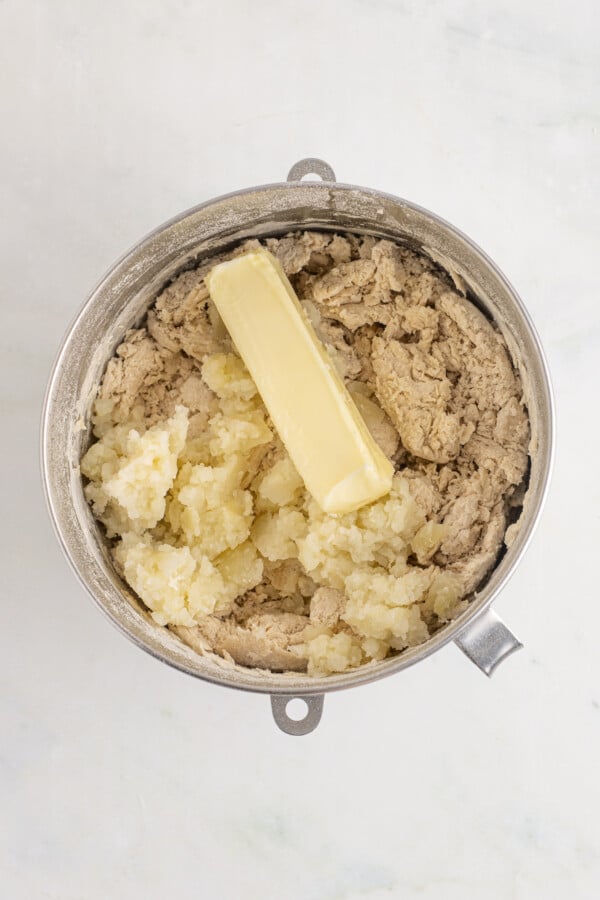
- Add the Potato Cooking Water. Next, add in the potato water, and continue to knead until the dough starts to come together. It will still be a little dry.
- Mix in the Potatoes and Butter. Last, add in the mashed potatoes and butter, and knead until the dough comes together.
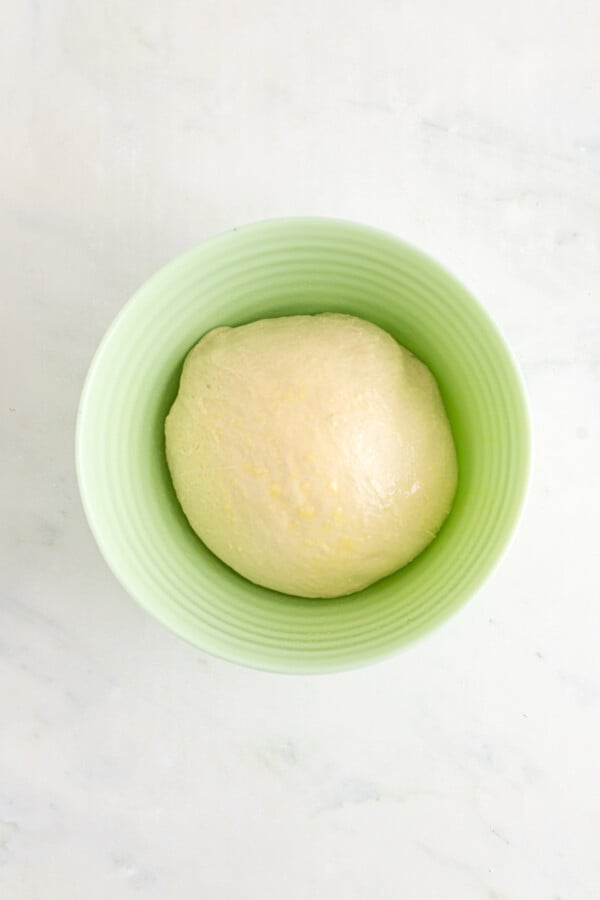
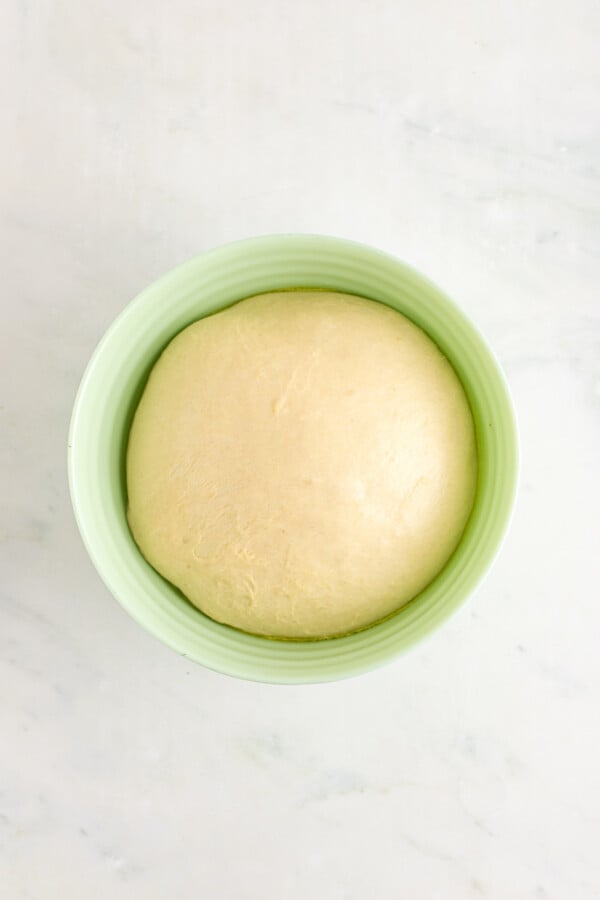
- Knead Until Done. Once the dough comes together, continue kneading it for 10 minutes on medium speed. The dough is done when it is smooth and stretchy – you should be able to stretch and hold it without breaking it.
- First Rise. Roll the dough into a ball and place it into a large greased bowl. Cover it with plastic wrap or a clean kitchen towel, and let it rise for 1 hour or until doubled in size.
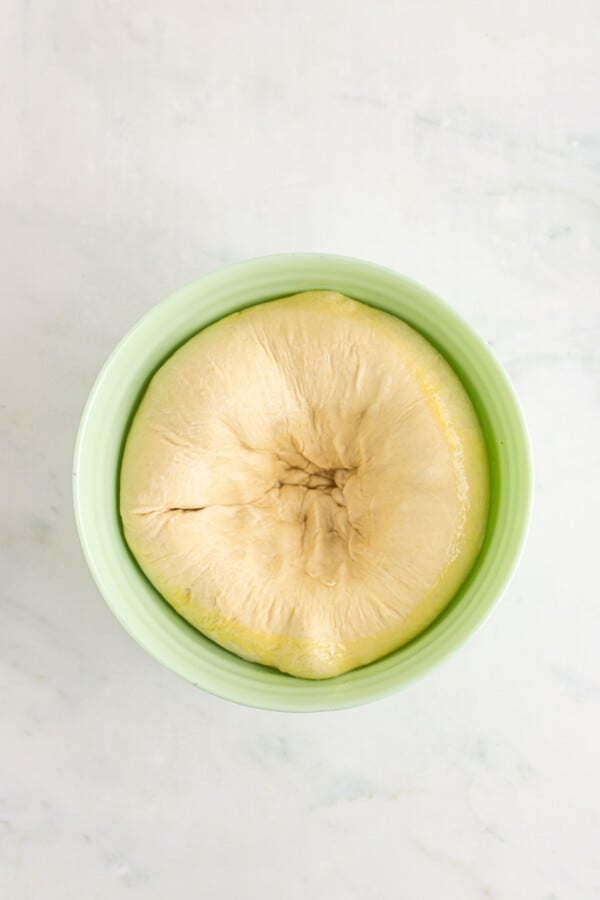
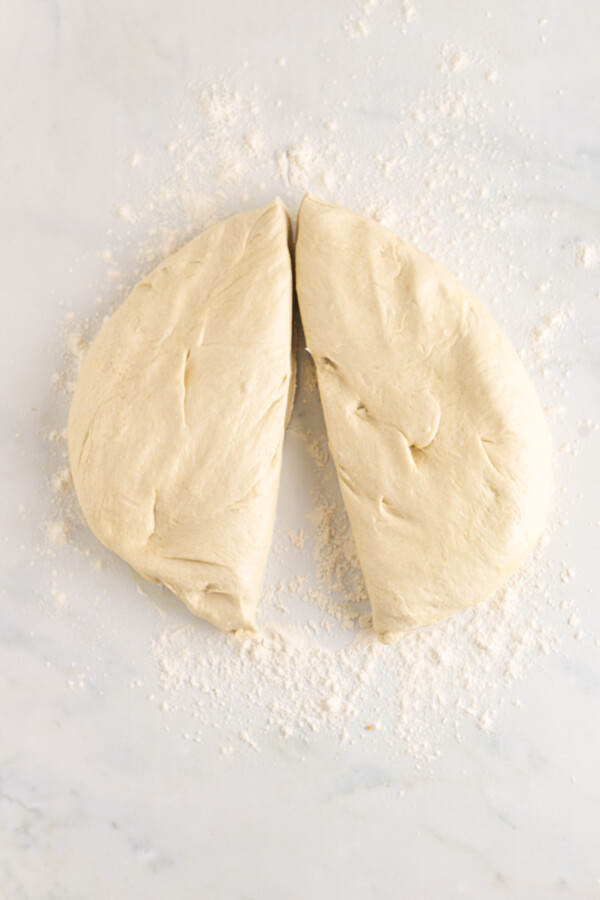
- Shape the Loaf. Once the dough has risen, punch it down and turn it out onto a clean floured surface. Cut the dough into two equal pieces. Then fold the sides of each half inwards, and pinch to hold. Next, fold the edges of each half inwards and pinch to hold. They should look like smooth logs.
Want to save this recipe?
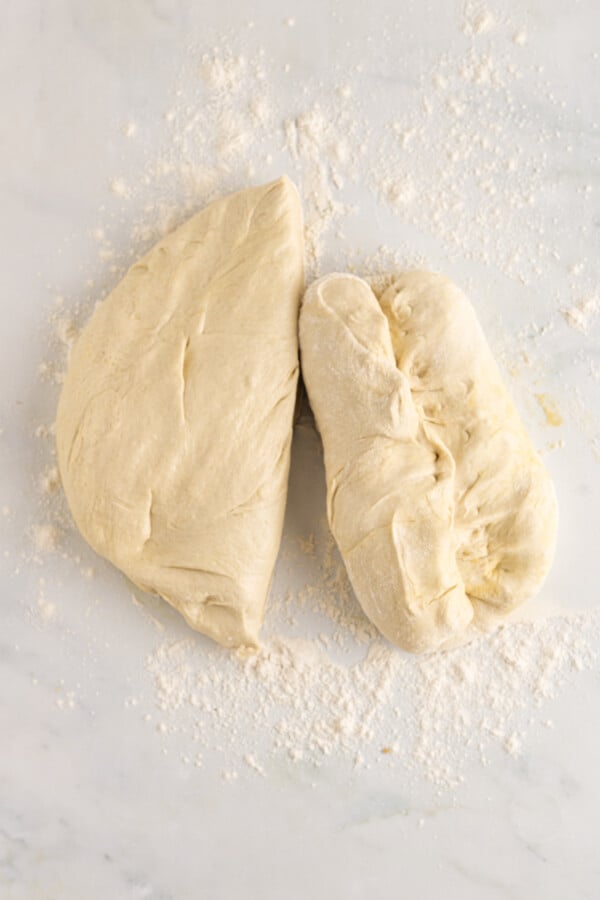
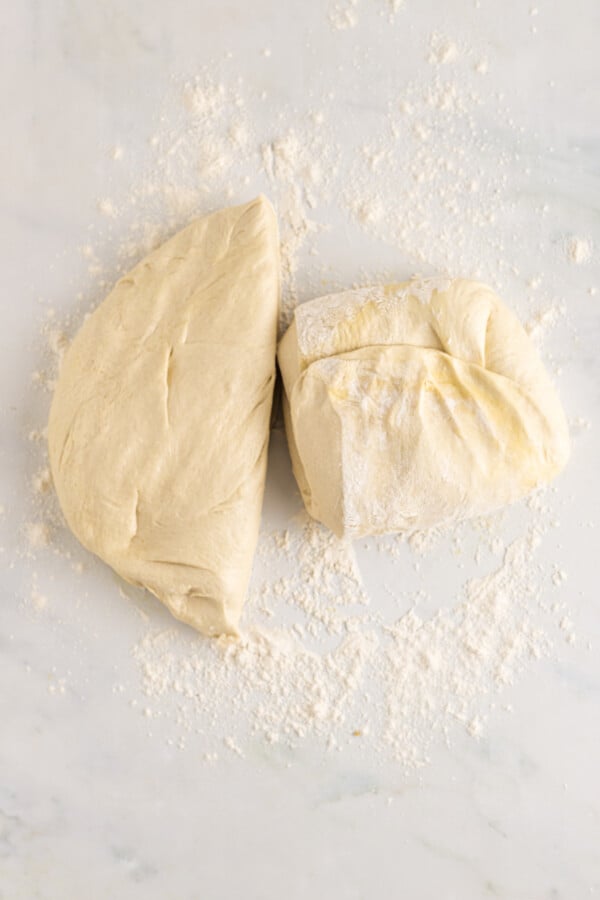
- Second Rise. Place each log into a well-greased loaf pan. Lightly cover them with plastic wrap, and let them rise for 1 hour. Towards the end of the second rising time, preheat the oven to 350°F.
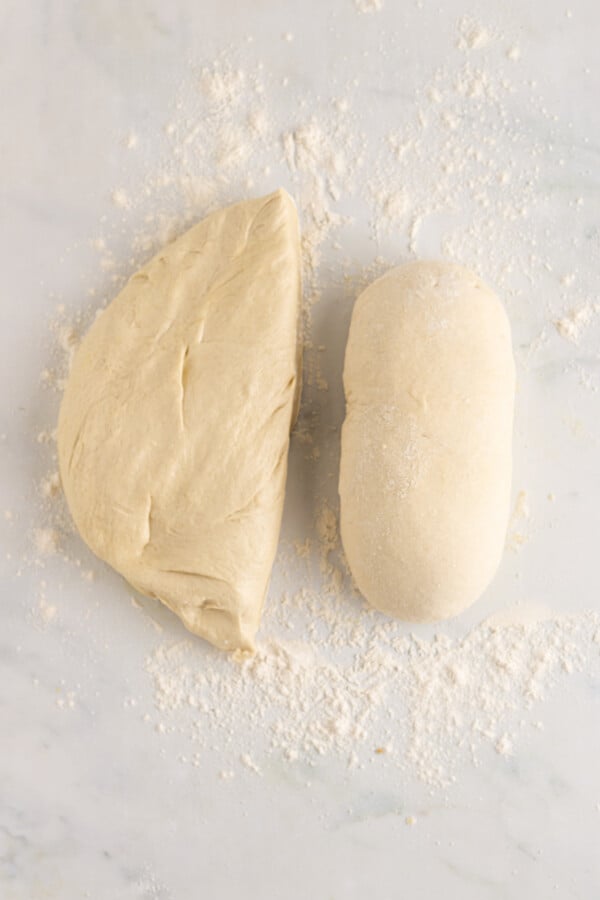
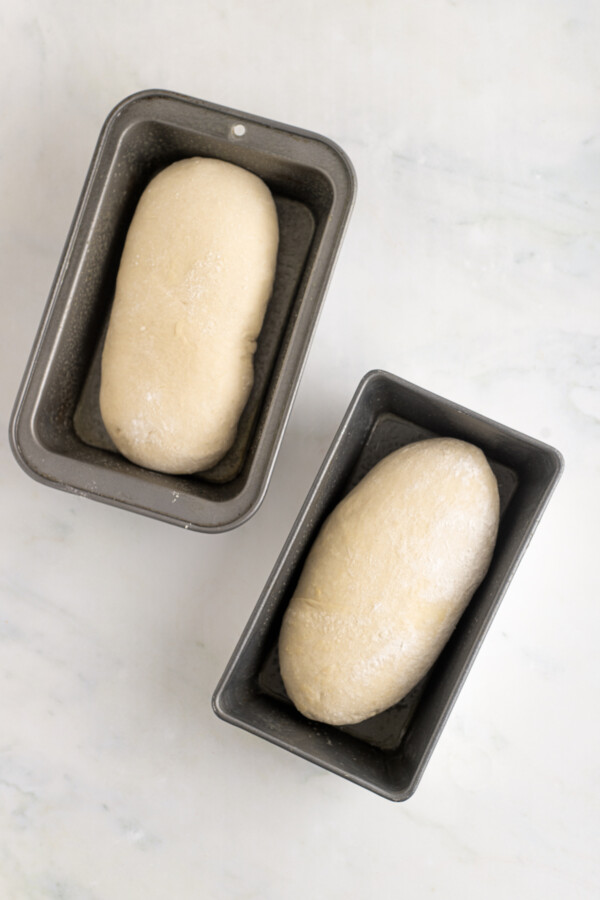
- Bake. When the loaves are done rising, place them into the preheated oven on the middle rack. Bake for about 35 – 40 minutes, or until golden on top and baked through.
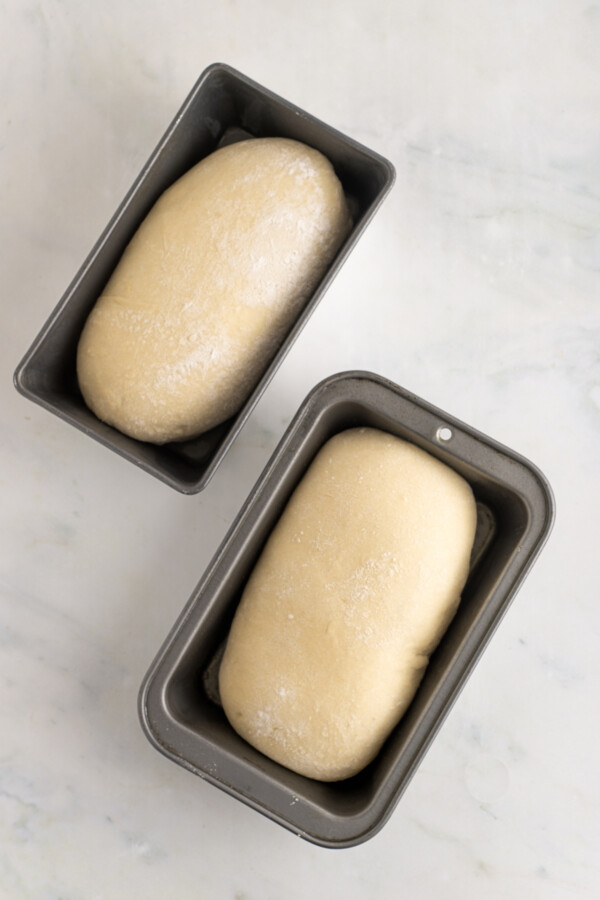
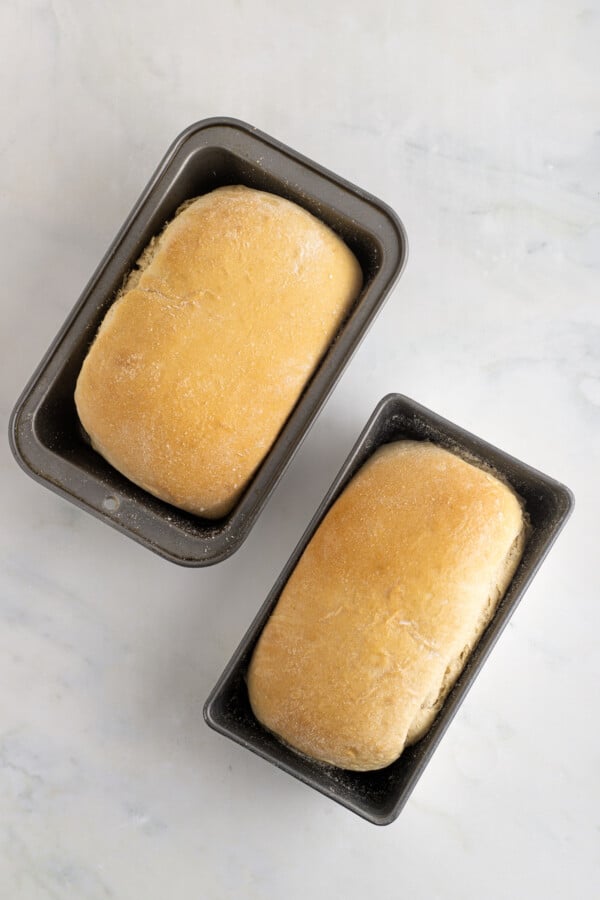
- Cool and Enjoy! Take the baked loaves out of the oven, and place them on a wire cooling rack. Let them cool completely before taking them out of the pans. Slice and serve as desired.
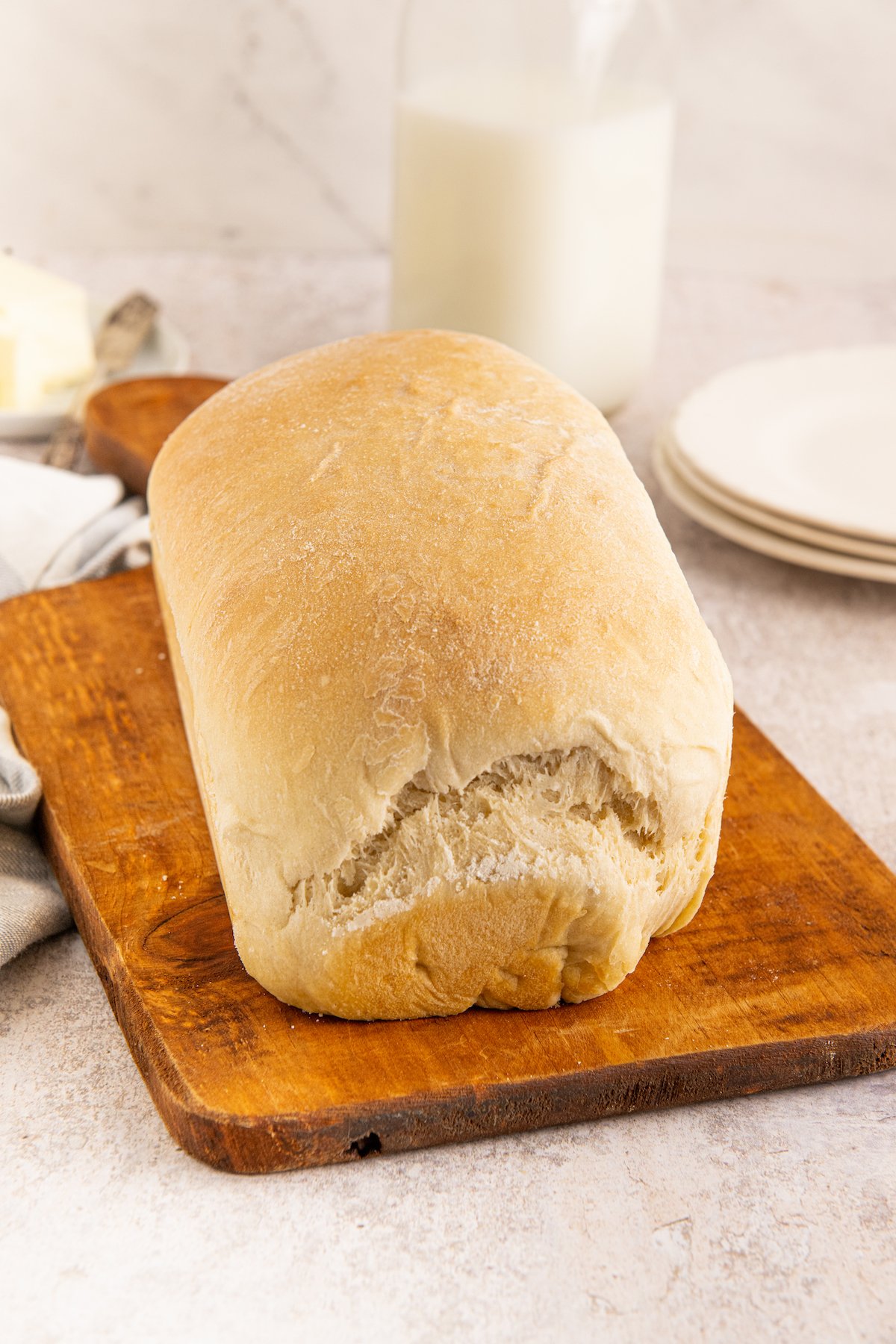
Baker’s Notes
Every baking recipe is a little easier when you have some inside info. I’ve baked this bread a number of times, as well as many other baking recipes, and these helpful tips have stood the test of time.
- Yeast and Temperature: When working with yeast-based recipes such as this one, it is important to have the correct temperature of warm milk. If the milk is too hot, it will kill the yeast. If it is too cold, the yeast won’t activate and the dough won’t rise properly. The ideal temperature is between 105°F – 110°F, or slightly warmer than body temperature.
- When Is My Bread Done? It’s so disappointing to take a loaf of bread out of the oven and wait for it to cool, only to realize it wasn’t done through. My preferred method for checking doneness is by using an instant read thermometer! It’s so easy. An internal temperature of 190° shows that the bread is baked through.
- Slicing: The bread keeps best as a whole, unsliced loaf, so if you don’t plan on using it right away, don’t slice it. Just leave it unsliced until you’re ready to serve it.
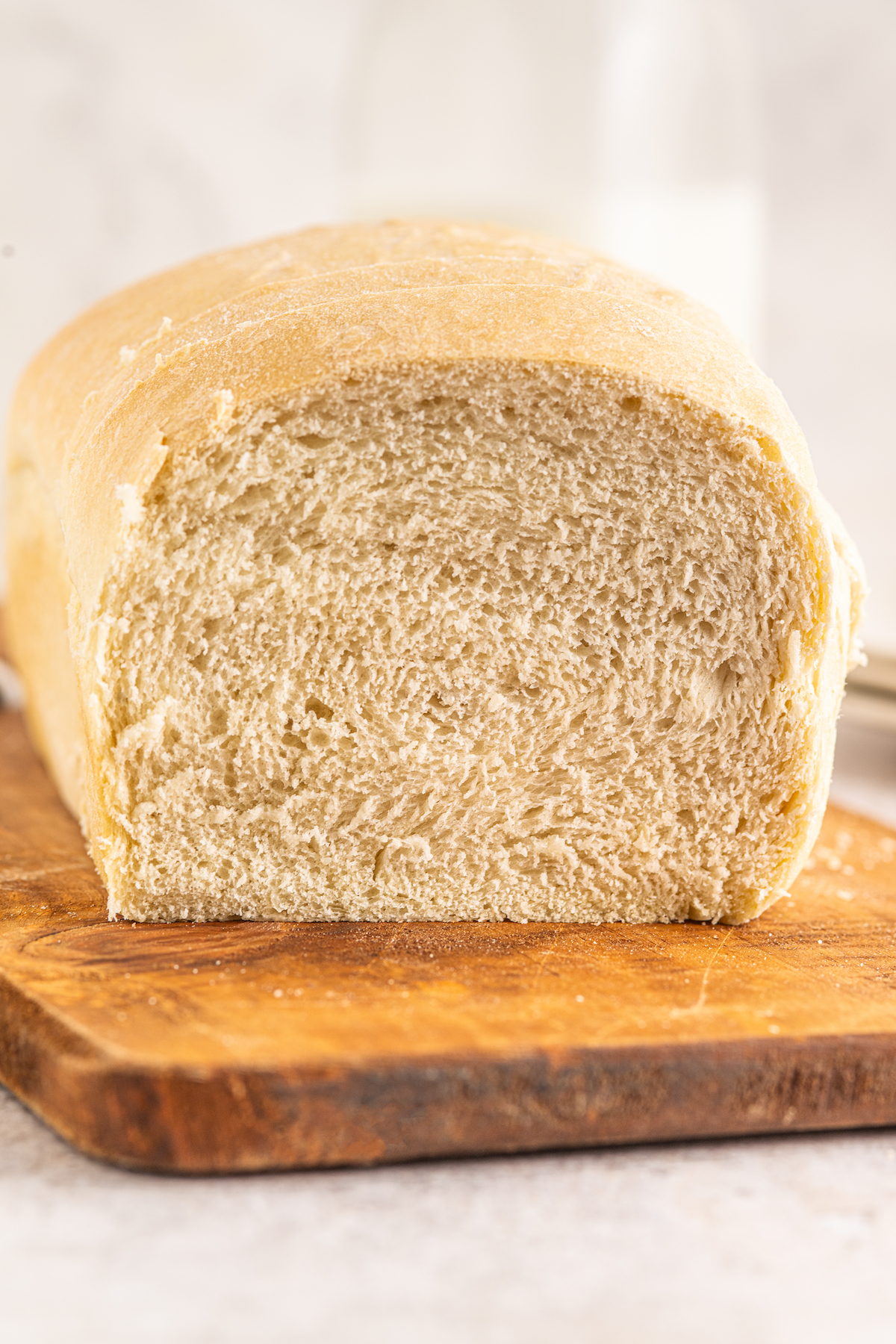
Yummy Serving Suggestions
I love this bread just served with a generous amount of butter, or jam, or butter and jam. But you can also serve it as part of a larger dish or meal, like these:
- Stew: A hearty bowl of stew is that much more delicious when served with a generous slice of homemade bread and butter. This Crockpot Chicken Stew is warm, cozy, and easy to make! Or go classic with this decadent Crockpot Pot Roast!
- Salad: A chopped salad (like this Maggiano’s Chopped Salad copycat) is a wonderful accompaniment to homemade bread, especially if you toast it and add some garlic butter. Yum.
- Eggs: One of my all-time favorite breakfasts – or lunches, or dinners – is a basic egg sandwich or egg salad sandwich. Just make your favorite style of eggs and pile them on good bread with a little mayonnaise for creaminess. If you really want a great egg sandwich, check out these 4 Ways to Scramble Eggs.
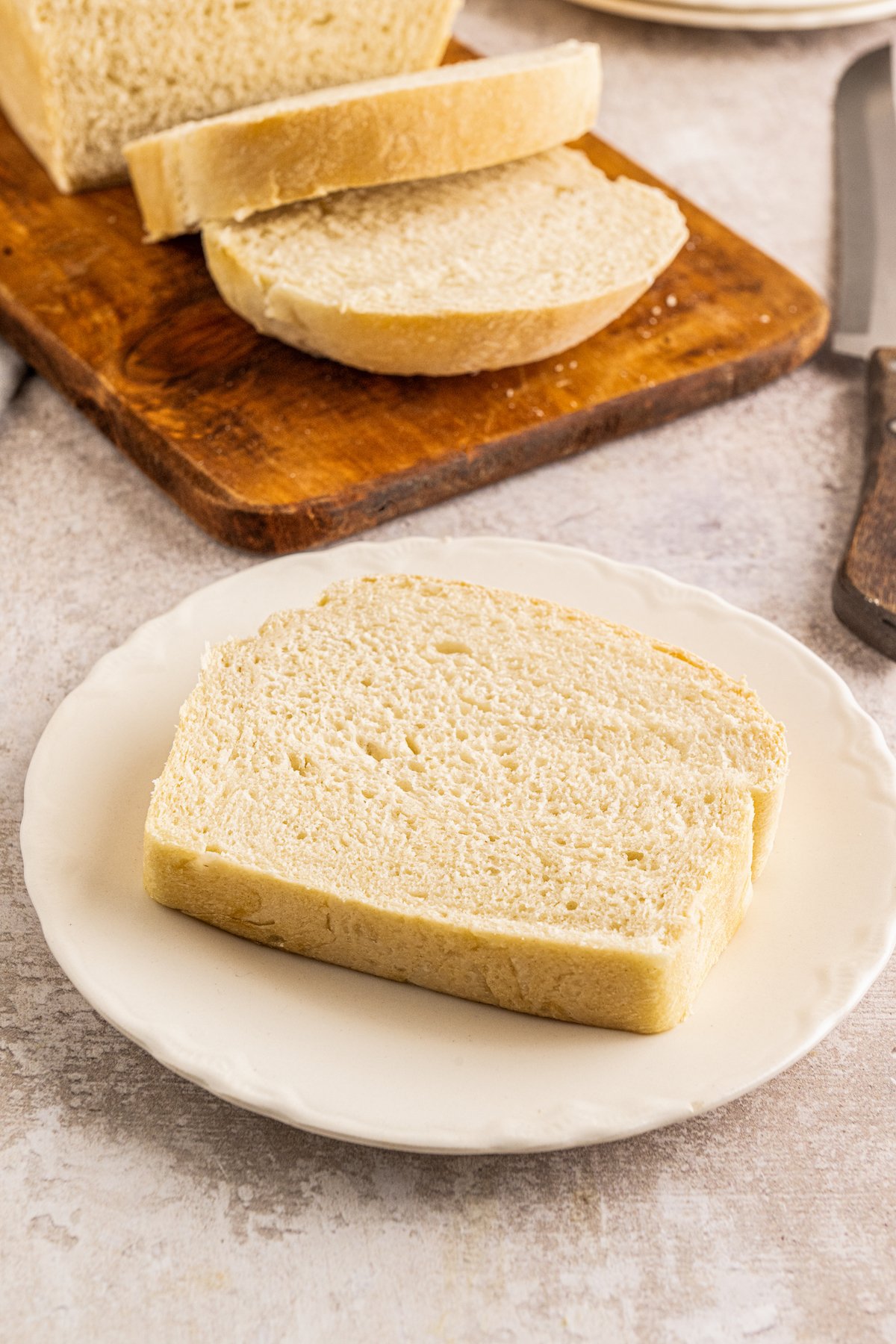
How to Store This Bread
This potato bread can be stored at room temperature for easy serving, and it lasts a surprisingly long time if you store it properly. Place it in an airtight container or baggie, and keep it on the counter for up to 5 days. Whole loaves store better than sliced loaves, so leave it unsliced until you actually want to serve it.
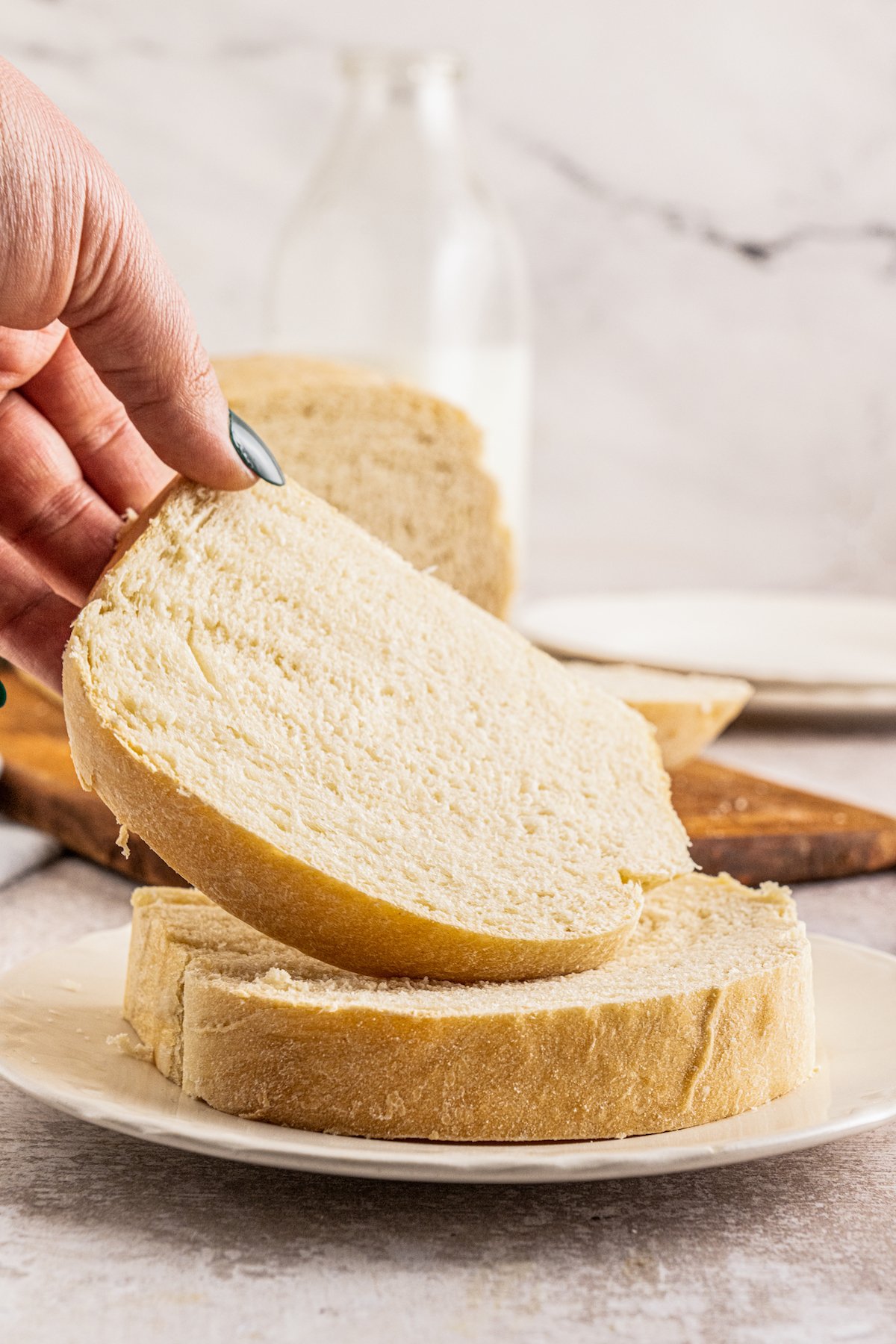
Does Potato Bread Freeze Well?
Definitely! You can absolutely freeze this bread and then take it out later to thaw and serve. Just cool it completely before you freeze it. Make sure to wrap it well in a couple of layers of foil, or a layer of plastic wrap plus a layer of foil, or just place it in a freezer bag and press out as much air as you can before sealing.
Frozen bread will keep for up to six months. If you slice your bread before freezing it, you can easily grab out exactly how many slices you need. Just make sure to wrap it up extra tight so it doesn’t get freezer burn!
More Homemade Bread Recipes
- Homemade Crescent Rolls
- Brioche Buns
- Homemade Pita Bread
- Copycat Texas Roadhouse Rolls
- Buttery Beer Bread
- Homemade Hot Dog Buns
- Irish Soda Bread
- Homemade Soft Pretzels
Homemade Potato Bread
Ingredients
- 1 ½ cup diced potatoes
- 1 ¼ cup warm milk
- 2 tablespoons granulated sugar
- 1 tablespoon + 1 teaspoon instant yeast
- 6 cups all purpose flour
- 1 cup bread flour
- 2 teaspoons salt
- ½ cups salted butter, room temperature
Want to save this recipe?
Instructions
- Add potatoes to a medium-sized saucepan. Add enough water to cover the potatoes, then place on the stove. Bring the potatoes to a boil and continue boiling until they are cooked through. Once cooked, drain the potatoes and reserve 1 cup of potato water. Mash the potatoes, then let them cool for about 20-30 minutes.
- In the bowl of a stand mixer, fitted with a whisk attachment, combine warm milk, sugar, and yeast. Lightly whisk together until just incorporated, then let the mixture sit for 5 minutes or until bubbly.
- Swap the attachment to a dough hook, then add in all-purpose flour, bread flour, and salt. Knead on medium-low speed until incorporated. The mixture will be clumpy and dry.
- Add in potato water and continue to knead until the dough starts to come together, but it will still be a little dry. Add in potatoes and butter and knead until the dough comes together.
- Once the dough comes together, knead for 10 minutes on medium speed. The dough will be ready when you can stretch and hold it without breaking it. The dough should also be smooth. Roll the dough into a ball, then place into a large greased bowl. Cover with plastic wrap or a clean kitchen towel, then let rise for 1 hour or until doubled in size.
- Once the dough has risen, punch it down, then turn it out onto a clean floured surface. Cut in half, then fold the sides of each half inwards and pinch to hold. Next, fold the edges of each half inwards and pinch to hold. They should look like smooth logs. Place each log into well-greased loaf pans. Lightly cover with plastic wrap and let rise for 1 hour.
- Towards the end of the rise time, preheat the oven to 350°F.
- Once the loaves have risen, place them into the preheated oven on the middle rack. Bake for about 35-40 minutes or until golden on top and baked through.
- Once baked, remove from the oven and place into a wire cooling rack. Let the loaves cool completely, then remove them from the pans and slice.
Notes
- Storing: Store potato bread in an airtight container or baggie, and keep it on the counter for up to 5 days. Whole loaves store better than sliced loaves, so leave it unsliced until you actually want to serve it.
- Yeast and Temperature: When working with yeast based recipes such as this one, it is important to have the correct temperature of warm milk. If the milk is too hot, it will kill the yeast. If it is too cold, the yeast won't activate and the dough won't rise properly. The deal temperature is between 105°F-110°F, or slightly warmer than body temperature.
- When Is My Bread Done? It’s so disappointing to take a loaf of bread out of the oven and wait for it to cool, only to realize it wasn’t done through. My preferred method for checking doneness is by using an instant read thermometer! It’s so easy. An internal temperature of 190° shows that the bread is baked through.
- Slicing: The bread keeps best as a whole, unsliced loaf, so if you don't plan on using it right away, don’t slice it. Just leave it unsliced until you’re ready to serve it.
Nutrition
Categories:
Post may contain affiliate links. Read my disclosure policy.

